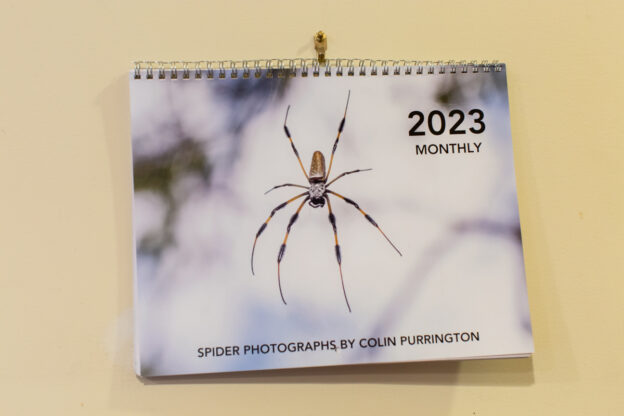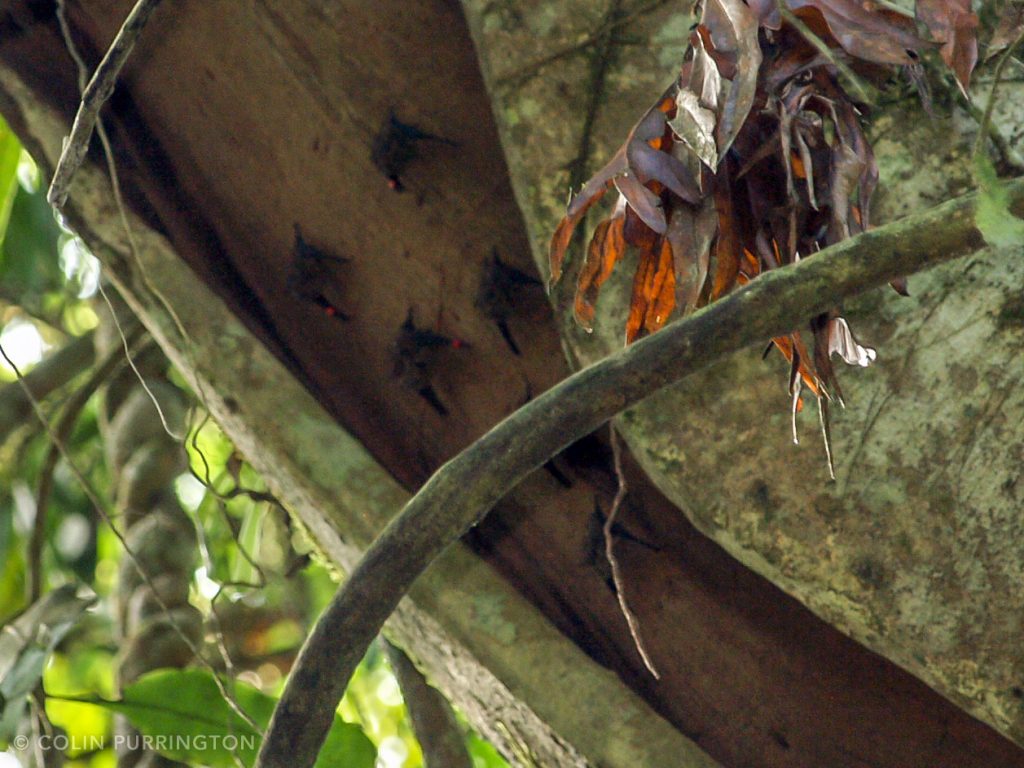My Dad is always urging me to send photographs to the nature organizations he’s fond of, with the hope that someday I might be featured in the calendars they send to their members and he can brag to his friends. I’m sick of the nudging so I decided to just make him one. Went with spiders because he’s less likely to know when I’ve misidentified something (he’s an entomologist). If you want to see the original of any of the images, they are all hyperlinked.
Sharing here, in part, in case anyone with experience ordering photo calendars can point me to a better online printing service. This one was from Shutterfly and was fairly easy to set up and configure, but I want to find a company that allows different formats of text within a single text box so that it’s easier to include both vernacular name and Latin binomial. Also, the one I sent to my Dad for Christmas never actually arrived, so I’m a bit disappointed in Shutterfly. And $30 seems expensive (I realize a coupon would help). Anyone have suggestions?

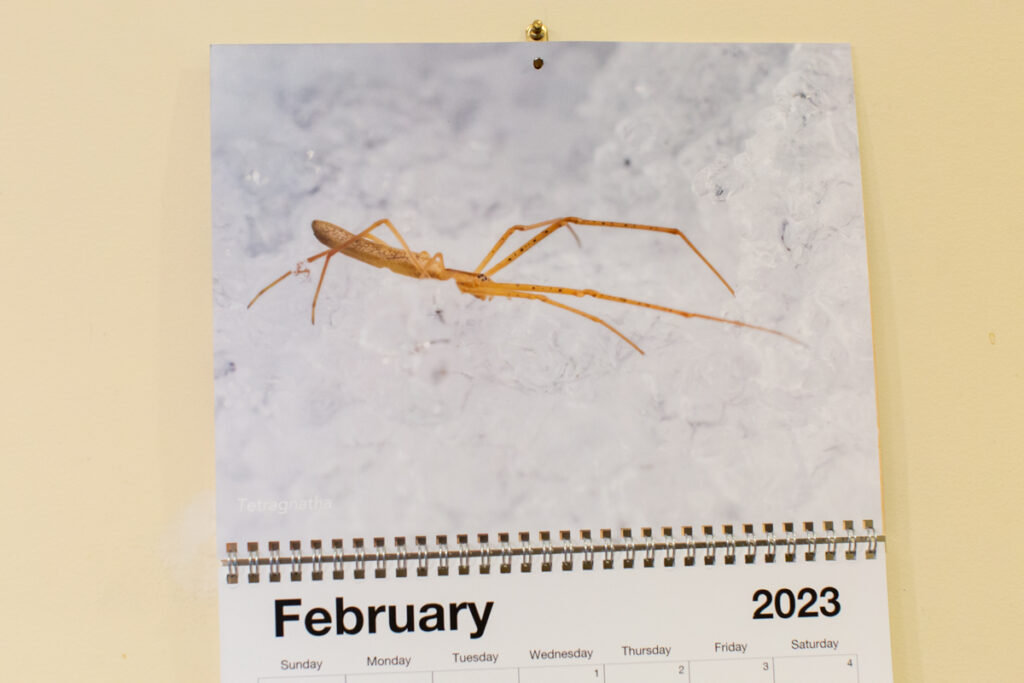
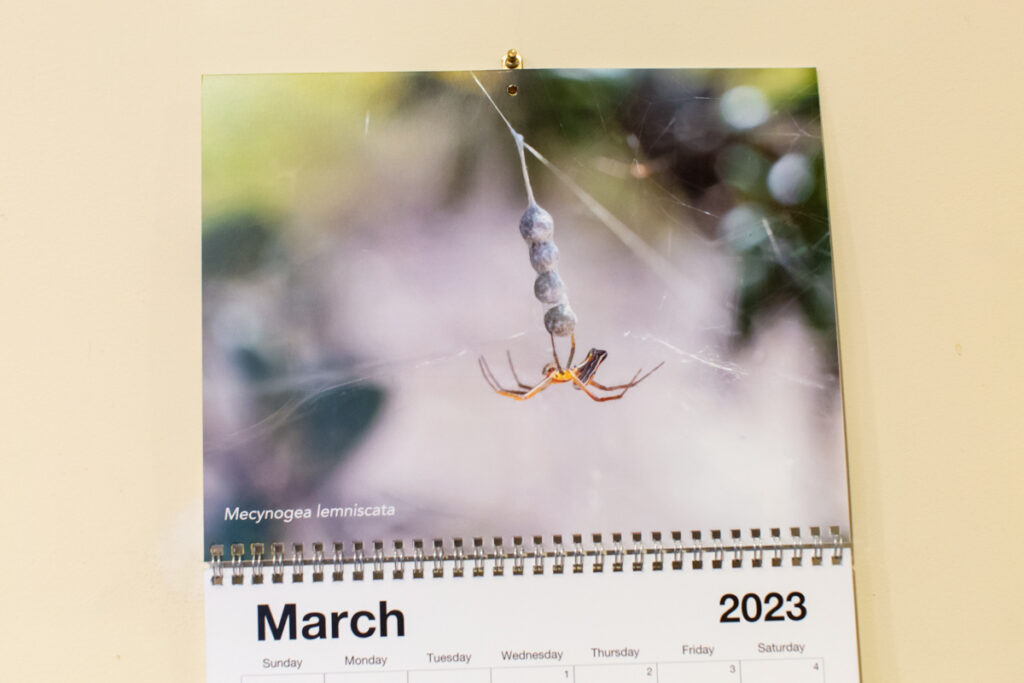
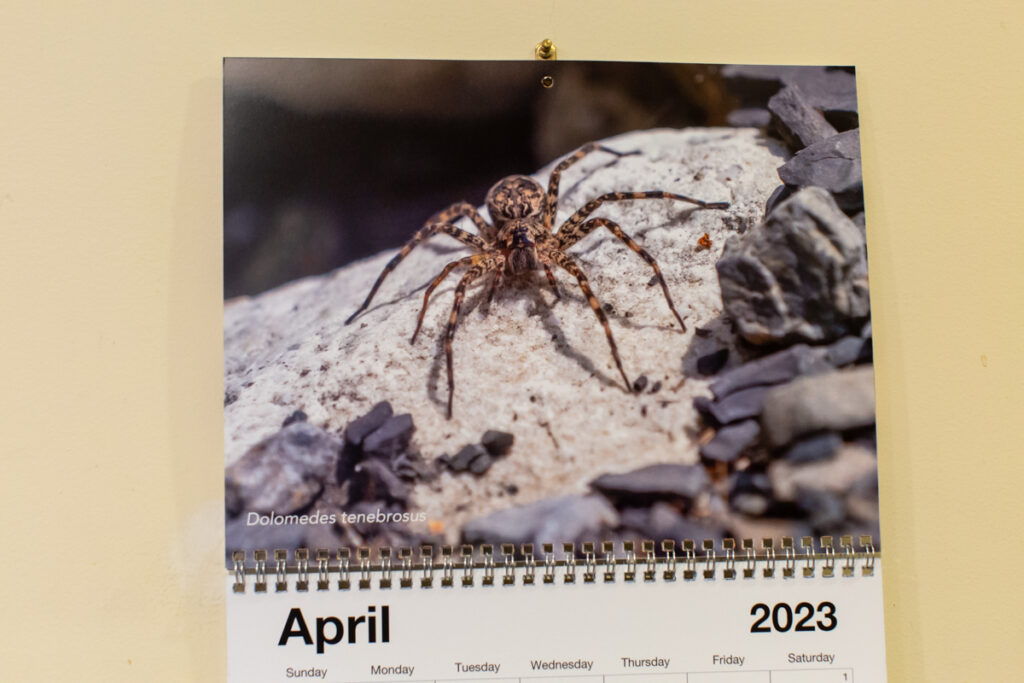
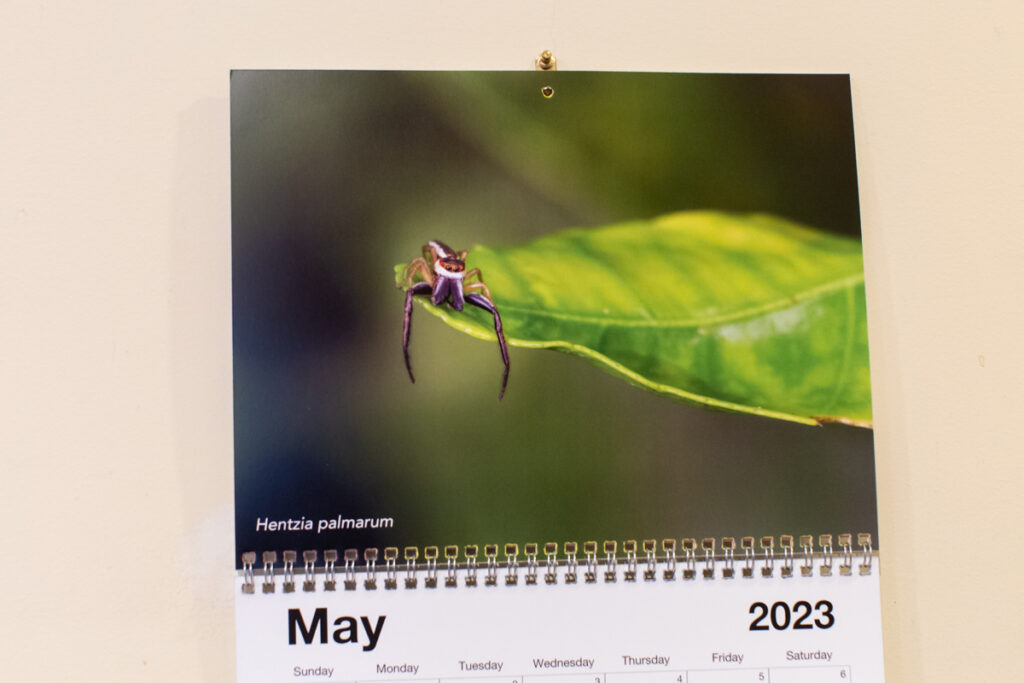
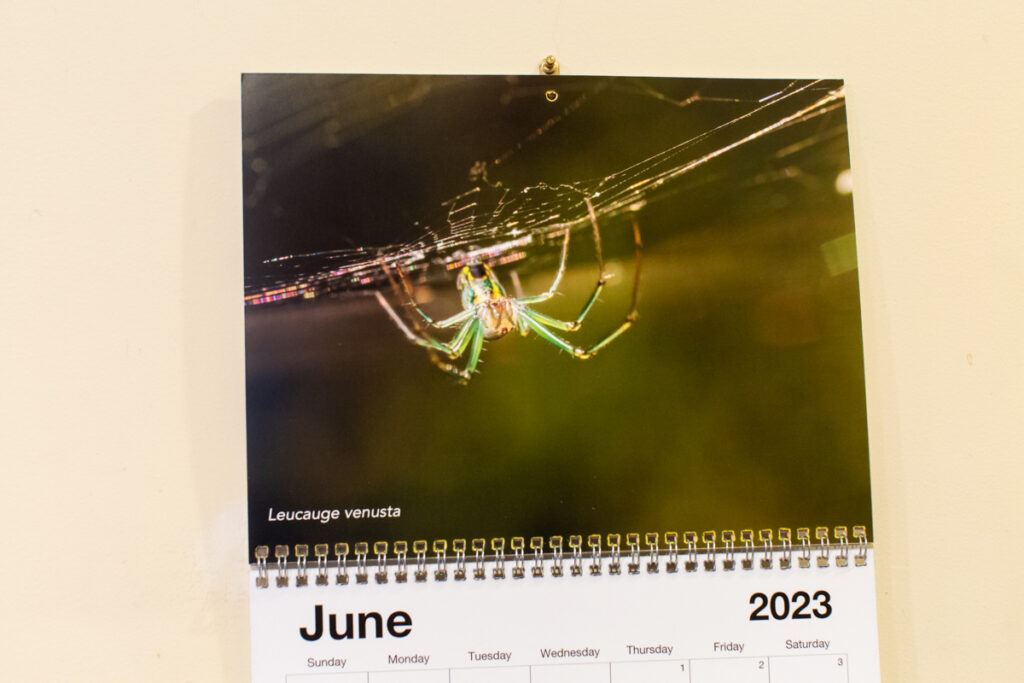
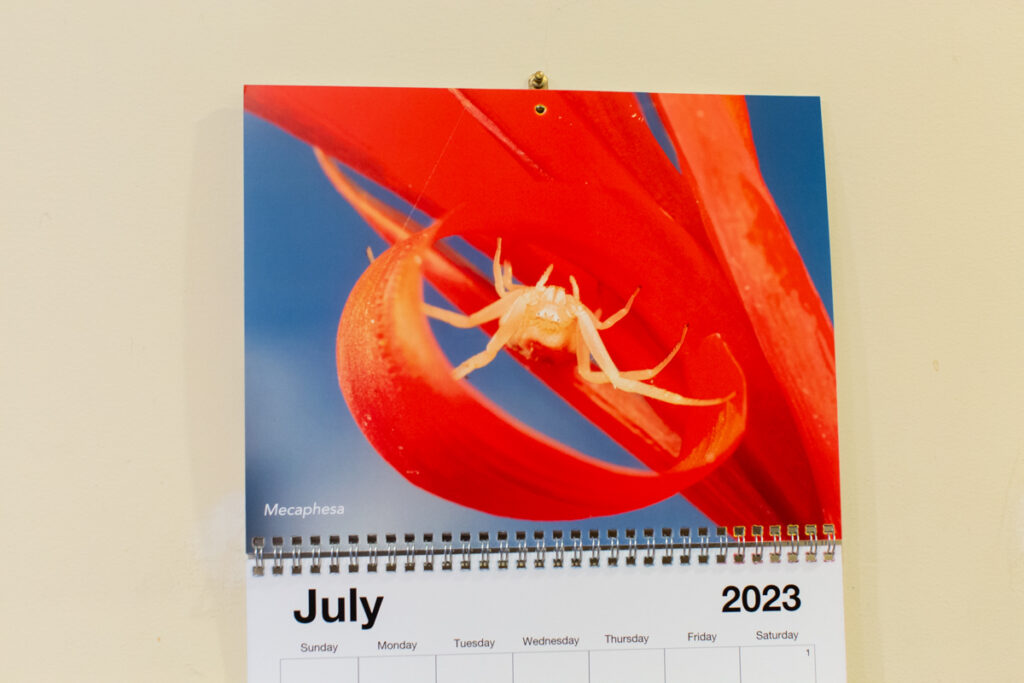
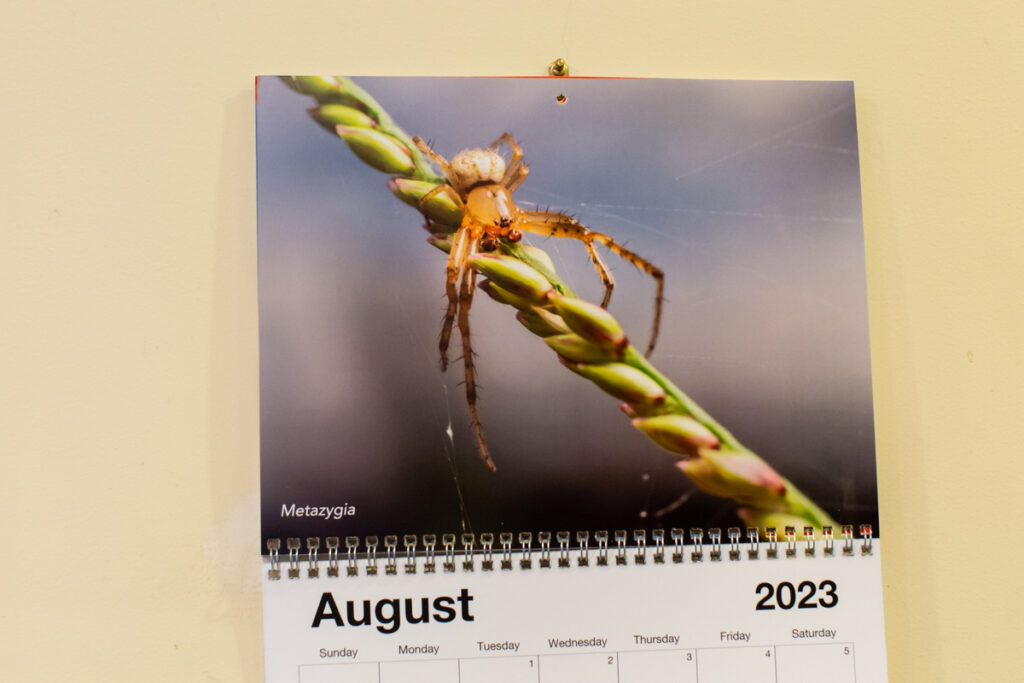
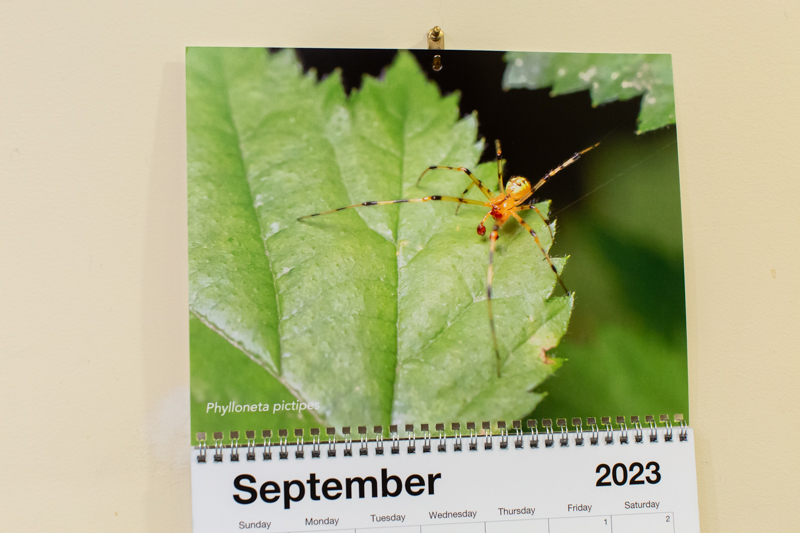

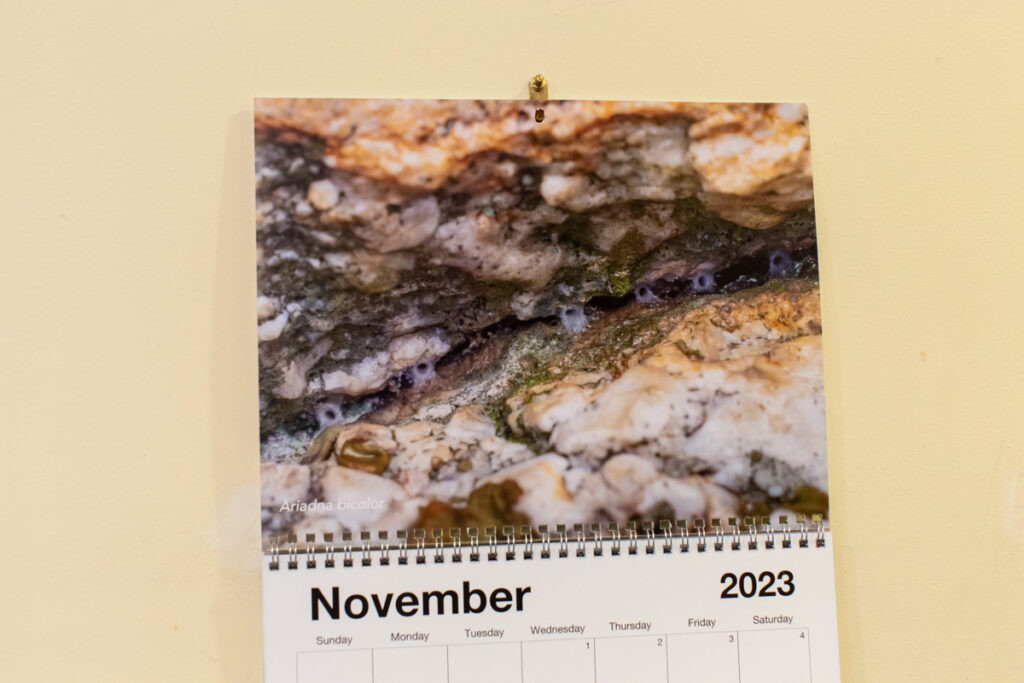
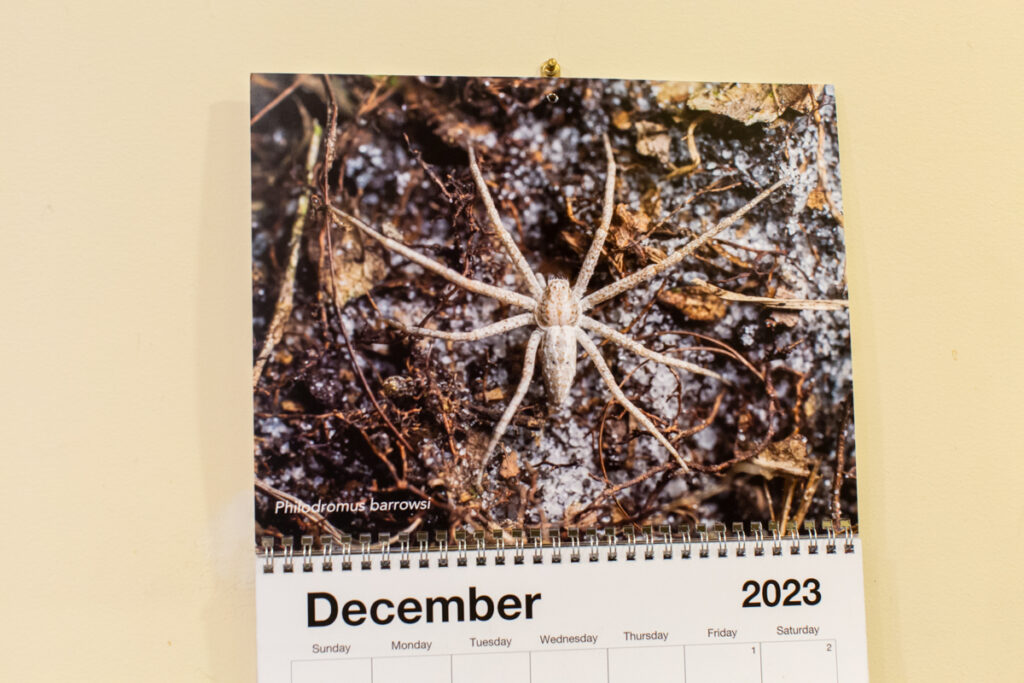
Cover spider is a golden silk orbweaver (Trichonephila clavipes). See original.

